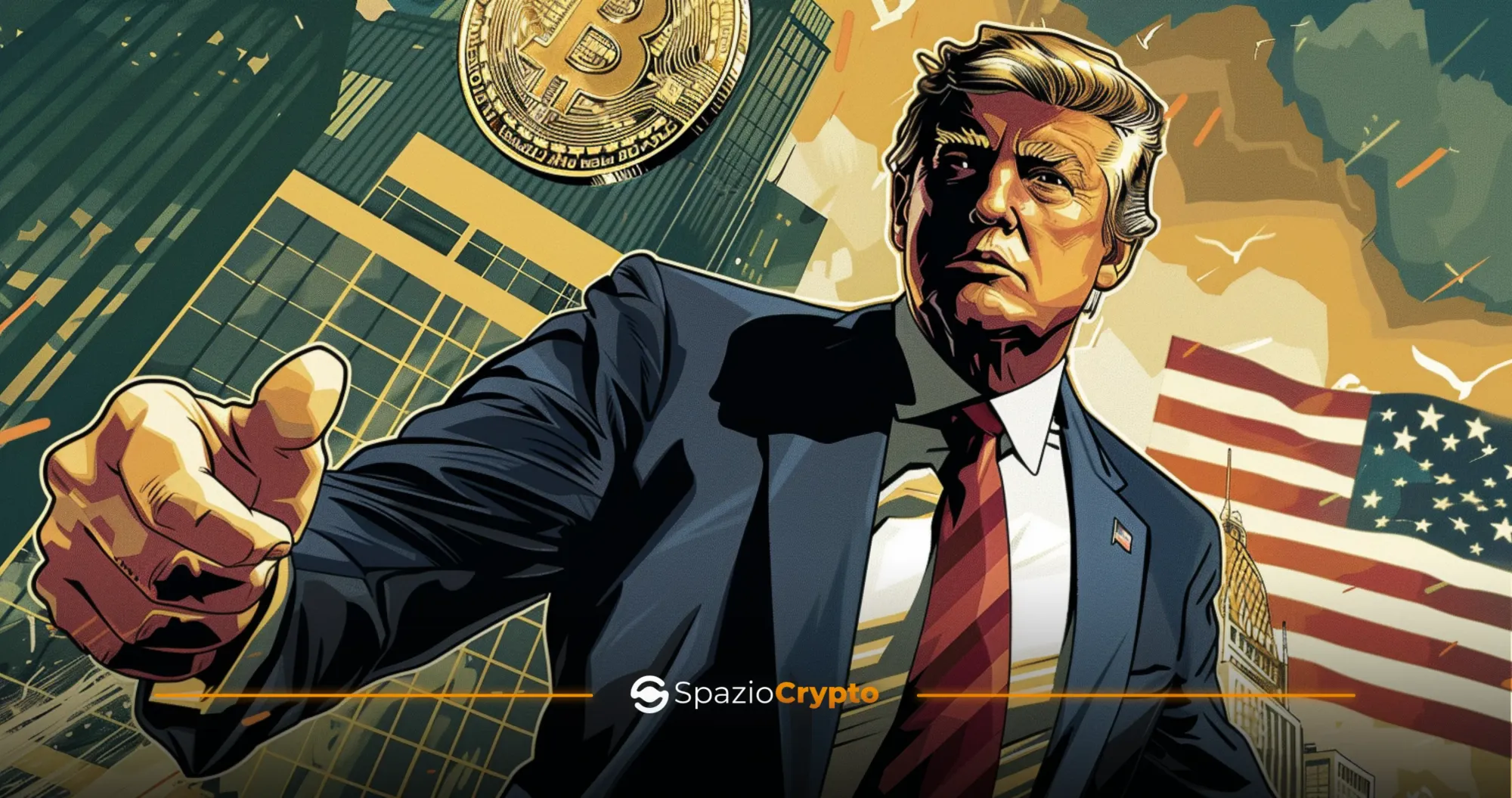In the ever-changing landscape of emerging technologies, smart contracts stand out as key pillars for digital transformation. Their introduction has brought a new perspective on the way we conceive and conduct transactions, gradually freeing us from the need for traditional intermediaries. In this Spaziocrypto article, we will explore the programming underpinnings of smart contracts, outlining their crucial role in the blockchain revolution and decentralised programming.
Smart Contracts: What They Are and How They Work
Smart contracts are autonomous, self-executing, authenticated computer codes on a blockchain. These digital contracts are designed to automate and guarantee the execution of agreements without requiring the intervention of intermediaries. Their emergence is closely linked to the development of blockchain technology, which provided the necessary infrastructure for their implementation. The distinctiveness of smart contracts lies in their ability to execute code in a trusted, immutable manner and without the need for central control.
Key Role in the Blockchain
To fully understand the concept of smart contracts, it is essential to emphasise their fundamental role in blockchain networks. Traditionally, financial transactions required trust in intermediaries such as banks or notaries to ensure adherence to agreements. The blockchain, a distributed and decentralised technology, has introduced the possibility of recording transactions in a secure, transparent and manipulation-resistant manner. Smart contracts, executed within this blockchain, act as catalysts for automation and trust in digital transactions.
Fundamental features of smart contracts
The strength of smart contracts lies in their inherent characteristics. First of all, they are immutable, which means that once created and registered on the blockchain, they cannot be changed or altered. This ensures security and trust in transactions. Furthermore, they are self-executing, meaning they are programmed to automatically perform their functions when a certain condition occurs. Their authenticity is guaranteed by encryption and distribution on nodes of a decentralised network.
The Evolution of Decentralised Programming
The advent of smart contracts marked a milestone in the evolution of decentralised programming. With the ability to automate a wide range of processes, these digital contracts have paved the way for new usage scenarios, from the execution of legal contracts to the management of voting systems and the implementation of complex financial protocols. We will explore the programming of smart contracts in more depth, analysing the underlying technologies, security, and providing practical examples to fully understand their revolutionary potential.
Fundamentals of Smart Contracts
In smart contracts, the power lies in their programmability and ability to automatically perform predetermined actions. To fully understand how these digital contracts work, it is essential to explore their fundamentals, from their basic principles to their underlying logic.
Definition and Key Concepts
Smart contracts are written in specific programming languages, the most popular of which is Solidity. These digital contracts contain a series of instructions that are executed when certain conditions are met. Basically, they automate processes that would normally require a human intermediary, increasing efficiency and reducing the risk of errors or fraud.
Basic Structure of Smart Contracts
The structure of a smart contract comprises several key elements, including:
- State: It represents the variables and data stored within the contract.
- Methods: They define the actions that the contract can perform when called, often in response to certain conditions.
- Events: They communicate with the outside world, allowing dApps (decentralised applications) or other smart contracts to react to the actions performed by the contract.
These components work synergistically to ensure the integrity and effectiveness of the operations performed on the contract.
Interaction Between Smart Contracts and External Environment
A crucial aspect of smart contracts is their ability to interact with each other and with the external environment. This interconnection allows the creation of complex systems in which multiple smart contracts work together to achieve specific goals. In addition, smart contracts can interact with oracles, mechanisms that provide them with external information, enabling the creation of more versatile and dynamic applications.
Key Role of Solidity and Other Languages
The programming of smart contracts requires an in-depth knowledge of the language used to write the code. Solidity, developed specifically for the Ethereum platform, is the most common language. However, other languages such as Move and Chaincode are used on different blockchains. Each language has its own features and advantages, but the choice often depends on the selected blockchain platform and the objectives of the contract.
Fundamental Technologies for Smart Contracts Programming
Smart contracts programming is based on innovative technologies that enable the reliable creation and execution of autonomous digital contracts. We will explore the blockchain Ethereum in detail, expanding our understanding of its distributed architecture and the Solidity programming language that is fundamental to writing smart contracts.
Ethereum: The Decentralised Programming Revolution
The Ethereum platform represents a catalyst in the transformation of decentralised programming. Unlike Bitcoin, Ethereum is not limited to the management of financial transactions, but offers a complete development environment for the creation of decentralised applications (dApps) and, in particular, smart contracts. Ethereum operates on a network of distributed nodes, each containing a copy of the entire blockchain. This decentralised system guarantees the security and integrity of the network, preventing undue manipulation. Transaction validation relies on the Proof-of-Stake (PoS) consensus algorithm, which requires nodes to pledge an amount of cryptocurrency as collateral to participate in transaction validation.
Solidity: The Access Key to Ethereum Smart Contracts
The programming of smart contracts on Ethereum is made possible by the programming language Solidity. Designed specifically for the platform, Solidity simplifies the creation of smart contracts by providing a JavaScript-like syntax. Its main purpose is to define the execution logic of smart contracts and manage interactions with the blockchain. The importance of Solidity is highlighted by its ability to handle critical aspects such as security and efficiency. However, developers must pay particular attention to security vulnerabilities, as programming errors can lead to malicious exploits. Concepts such as "gas," which is the unit of measure for resource utilisation, and the "fallback function," an emergency function that can be called in specific circumstances, are essential for secure and efficient programming.
Diversity of Blockchain and Programming Languages
While Ethereum dominates the smart contracts landscape, other blockchains offer unique approaches. The Binance Smart Chain (BSC), for example, uses Solidity, but with some variations on Ethereum, providing a viable alternative with higher transaction speed. Other blockchains, such as Cardano, adopt specific programming languages, such as Plutus. Exploring different blockchains and programming languages allows developers to evaluate options based on criteria such as security, scalability and ease of use. The choice of platform and language becomes crucial to the success of smart contracts, as it affects security, performance, and the ability to adapt to the needs of the project.
Security of Smart Contracts
Security is a top priority in smart contracts programming, considering the financial value and impact they can have on a variety of industries. In this chapter, we will take a closer look at the common challenges and vulnerabilities of smart contracts and provide practical guidelines for developing secure and reliable digital contracts.
Common Vulnerabilities in Smart Contracts
Smart Contracts programming presents challenges and vulnerabilities that can be exploited by malicious attackers. Some of the most common vulnerabilities include:
- Reentrancy Attacks: Reentrancy attacks occur when a contract calls a function of another contract before completing the execution of its logic. This can lead to significant loss of funds.
- Integer Overflow/Underflow: If not handled properly, integer overflow or underflow can cause unexpected behaviour and potential loss of funds.
- Fallback Function Issues: The fallback function, an emergency function called when a contract receives funds without specifying a function, can be maliciously exploited if not handled properly.
- Gas Limit and Out of Gas: Ineffective management of gas can lead to situations where transactions are not completed or the contract crashes.
Best Practices for Security of Smart Contracts
To mitigate these vulnerabilities, developers must adopt security best practices during the development process. Some crucial guidelines include:
- Input Validation: Ensure that input entries are validated appropriately to avoid front-running attacks and other exploits.
- Use of Tested Libraries: Prefer the use of tested and established libraries to reduce the risk of errors.
- Detailed Testing: Implement thorough testing to ensure the robustness and security of the contract.
- Secure Upgrades: In the event that a smart contract needs to be upgraded, ensure that the upgrade process is secure and does not introduce new vulnerabilities.
- Security Audits: Subject the contract to expert security reviews and audits to identify and correct any vulnerabilities.
Security Tools and Frameworks
Developers can leverage a number of tools and frameworks designed to improve the security of smart contracts. Some examples include:
- MythX: A static and dynamic analysis service that detects security vulnerabilities in smart contracts.
- Truffle Suite: A development and testing framework that simplifies the creation and management of smart contracts.
- OpenZeppelin: A standard smart contracts library and development framework that provides secure and tested components.
Security and Legal Implications
In addition to the technical aspects, it is also important to consider the legal implications of programming smart contracts. As these contracts can handle legally relevant financial transactions and agreements, it is critical to understand and comply with local and global regulations.
Smart Contract Practical Example for an NFT Minting DApp
To explore in detail the practical application of smart contracts, we will provide an example of a contract used in a Decentralised Application (DApp) dedicated to the minting of Non-Fungible Tokens (NFT). We will use the Solidity programming language on Ethereum to implement this smart contract.
// SPDX-License-Identifier: MIT
pragma solidity ^0.8.0;
import "@openzeppelin/contracts/token/ERC721/ extensions/ERC721Enumerable.sol";
import "@openzeppelin/contracts/access/ /Ownable.sol";
import "@openzeppelin/contracts/ /utils/math/SafeMath.sol";
contract NFTMinter is ERC721Enumerable, Ownable {
using SafeMath for uint256;
uint256 public constant maxMintPerPerson = 5;
uint256 public constant mintPrice = 0.01 ether;
uint256 public constant maxGasFee = 500 gwei;
mapping(address => uint256) private mintedTokens;
constructor(string memory _name, string memory _symbol, string memory _baseTokenURI) ERC721(_name, _symbol) {
_setBaseURI(_baseTokenURI);
}
function mintNFT(uint256 _quantity) external payable {
require(msg.value >= mintPrice.mul(_quantity), "Insufficient funds");
require(_quantity > 0 && _quantity <= maxMintPerPerson, "Invalid quantity");
uint256 totalMinted = mintedTokens[msg.sender].add(_quantity);
require(totalMinted <= maxMintPerPerson, "Exceeded maximum mint per person");
// Mint NFTs
for (uint256 i = 0; i < _quantity; i++) {
uint256 tokenId = totalSupply() + 1;
_safeMint(msg.sender, tokenId);
}
mintedTokens[msg.sender] = totalMinted;
// Refund excess funds
if (msg.value > mintPrice.mul(_quantity)) {
payable(msg.sender).transfer (msg.value - mintPrice.mul(_quantity));
}
}
function setBaseURI(string memory _baseTokenURI) external onlyOwner {
_setBaseURI(_baseTokenURI);
}
function withdraw() external onlyOwner {
payable(owner()).transfer (address(this).balance);
}
function getMaxGasFee() external view returns (uint256) {
return maxGasFee;
}
}
Variables-of-configuration
- maxMintPerPerson: Maximum number of NFTs that a person can mine.
- MintPrice: Price in Ether to minate an NFT.
- maxGasFee: Upper limit for gas charges.
Minting Function
- mintNFT: Allows users to mine a specified number of NFTs. Controls the price paid, quantity and limit of mint per person.
Auxiliary Functions
- setBaseURI: Allows the owner to update the base URI for metadata.
- withdraw: Allows the owner to withdraw the funds accumulated in the contract.
- getMaxGasFee: Returns the upper limit for gas expenses.
Keep in mind that this is just a generic example of a smart contract, and programming one to suit your needs requires working with an experienced and reputable blockchain developer. Also remember to have the security of the contract checked by a reputable team that has hands-on experience in smart contracts audits.
Futuristic Trends in Smart Contracts Scheduling
The smart contracts scheduling landscape is constantly evolving, fuelled by technological innovations and the growing adoption of blockchain. We will explore the emerging trends and new technologies that are shaping the future of smart contracts.
Interoperability between blockchains
One of the main challenges in the world of smart contracts is the lack of interoperability between different blockchains. Developers are looking for solutions to enable better communication and interaction between contracts on different networks. Projects such as Polkadot and Cosmos are working to create protocols that facilitate the exchange of information and assets between different blockchains.
Scalability and Cost Reduction
Scalability remains a critical priority for the large-scale adoption of smart contracts. Currently, many blockchains suffer from scalability limitations that affect transaction speeds and associated costs. Some projects are implementing scaling sharding as a scaling solution to improve efficiency and reduce transaction costs.
Smart Contracts based on Advanced Oracles
Oracles play a crucial role in smart contracts, providing data external to the blockchain. However, the dependence on centralised oracles can be a weakness. New approaches, such as decentralised oracles and off-chain consensus protocols, are being developed to improve the security and reliability of the information provided to smart contracts.
Integration of Smart Contracts with Digital Identity
The integration of smart contracts with digital identity systems is becoming increasingly relevant. This would allow smart contracts to interact in a more secure and controlled way with user identities, paving the way for a wide range of applications, from access to digital services to digital rights management.
Tokenization of Traditional Assets
Tokenization of traditional assets, such as real estate or shares, is gaining popularity. Smart contracts are being used to create tokens that represent ownership of real-world assets, enabling more efficient transactions and the participation of a wider public in investments traditionally reserved for the few.
Quantum Intelligent Contracts
With the advancement of quantum technologies, the implementation of quantum smart contracts is being explored. These would exploit quantum mechanical principles to provide advanced security and more efficient algorithms for certain categories of problems.
DeFi Ecosystems and Traditional Finance
Decentralised Finance (DeFi) is growing rapidly, with smart contracts facilitating an increasingly wide range of financial services, such as lending, asset exchange and staking. It is expected that the integration between DeFi ecosystems and traditional financial systems will continue to grow, opening up new opportunities and challenges.
Future Perspectives in Smart Contracts Scheduling
At Spaziocrypto, we believe that the future of smart contracts scheduling is fraught with fascinating opportunities and challenges. Blockchain interoperability, improved scalability and integration with legacy systems will shape the evolution of this technology. The growing adoption of smart contracts in the Decentralised Finance (DeFi) paves the way for new forms of collaboration and transactions, reshaping the way we think about digital agreements. However, the path to maturity entails the need to solve challenges such as security, privacy and public understanding. Continuing education, stakeholder collaboration and responsible innovation will be key to shaping a sustainable future for smart contracts programming.








